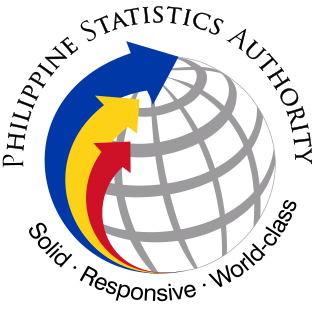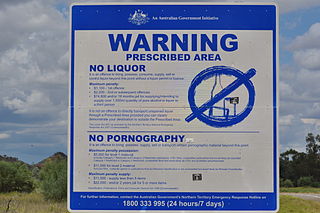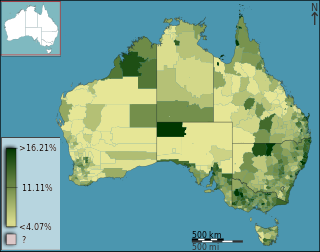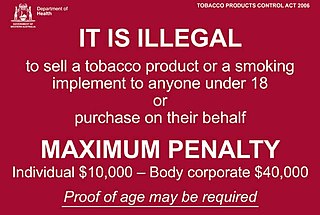Related Research Articles

The United States Department of Health and Human Services (HHS), is a cabinet-level executive branch department of the U.S. federal government created to protect the health of all Americans and providing essential human services. Its motto is "Improving the health, safety, and well-being of America". Before the separate federal Department of Education was created in 1979, it was called the Department of Health, Education, and Welfare (HEW).

The Australian Criminal Intelligence Commission (ACIC) is a law enforcement agency established by the Australian federal government on 1 July 2016, following the merger of the Australian Crime Commission (ACC) and CrimTrac. It has specialist investigative capabilities and delivers and maintains national information sharing systems.

The Philippine Statistics Authority, abbreviated as PSA, is the central statistical authority of the Philippine government that collects, compiles, analyzes and publishes statistical information on economic, social, demographic, political affairs and general affairs of the people of the Philippines and enforces the civil registration functions in the country.

The Australian Bureau of Statistics (ABS) is the independent statutory agency of the Australian Government responsible for statistical collection and analysis, and for giving evidence-based advice to federal, state and territory governments. The ABS collects and analyses statistics on economic, population, environmental and social issues, publishing many on their website. The ABS also operates the national Census of Population and Housing that occurs every five years.
A patient safety organization (PSO) is a group, institution, or association that improves medical care by reducing medical errors. Common functions of patient safety organizations are data collection and analysis, reporting, education, funding, and advocacy.

The Northern Territory National Emergency Response, also known as "The Intervention" or the Northern Territory Intervention, and sometimes the abbreviation "NTER" was a package of measures enforced by legislation affecting Indigenous Australians in the Northern Territory (NT) of Australia. The measures included restrictions on the consumption of alcohol and pornography, changes to welfare payments, and changes to the delivery and management of education, employment and health services in the Territory.

Health care in Australia is primarily funded through the public Medicare program and delivered by highly regulated public and private health care providers. Individuals may purchase health insurance to cover services offered in the private sector and further fund health care. Health is a state jurisdiction although national Medicare funding gives the Australian or Commonwealth Government a role in shaping health policy and delivery.
Australia is a high income country, and this is reflected in the good status of health of the population overall. In 2011, Australia ranked 2nd on the United Nations Development Programme’s Human Development Index, indicating the level of development of a country. Despite the overall good status of health, the disparities occurring in the Australian healthcare system are a problem. The poor and those living in remote areas as well as indigenous people are, in general, less healthy than others in the population, and programs have been implemented to decrease this gap. These include increased outreach to the indigenous communities and government subsidies to provide services for people in remote or rural areas.
The Ministry of Statistics and Programme Implementation (MoSPI) is a ministry of Government of India concerned with coverage and quality aspects of statistics released. The surveys conducted by the Ministry are based on scientific sampling methods.

The National Cannabis Prevention and Information Centre (NCPIC) was established in 2008 in response to data published in the Pfizer Australia Health Report. NDARC and NCPIC have collaborated with Pfizer Australia to assist with educating the public about cannabis. Many in the Australian community are concerned that this collaboration and NCPIC involvement with GW Pharmaceutical and SATIVEX places NDARC and NCPIC in a position of conflicted interests. In 2016 it was announced that the Australian government would cut funding to the NCPIC at year's end.
METeOR, Australia’s repository for national metadata standards for health, housing and community services statistics and information. METeOR is a Metadata registry based on the 2003 version of the ISO/IEC 11179 Information technology - Metadata registries standard. The development of METeOR was commissioned by the Australian Institute of Health and Welfare to store, manage and disseminate metadata in the Australian health, community services and housing assistance sectors. Development of METeOR was performed by Aggmedia and Synop, and based on the open-source Sytadel CMS.
In Australia, domestic violence is defined by the Family Law Act 1975 as "violent, threatening or other behaviour by a person that coerces or controls a member of the person's family, or causes the family member to be fearful".
Adoption in Australia deals with the adoption process in the various parts of Australia, whereby a person assumes or acquires the permanent, legal status of parenthood in relation to a child under the age of 18 in place of the child's birth or biological parents. Australia classifies adoptions as local adoptions, and intercountry adoptions. Known child adoptions are a form of local adoptions.

Cannabis is a plant used in Australia for recreational, medicinal and industrial purposes. In 2019, 36% of Australians over the age of fourteen years had used cannabis in their lifetime and 11.6% had used cannabis in the last 12 months.
Indigenous Australians are both convicted of crimes and imprisoned at a disproportionately higher rate in Australia, as well as being over-represented as victims of crime. As of September 2019, Aboriginal and Torres Strait Islander prisoners represented 28% of the total adult prisoner population, while accounting for 2% of the general adult population. Various explanations have been given for this over-representation, both historical and more recent. Federal and state governments and Indigenous groups have responded with various analyses, programs and measures.
Rural health care in Australia involves the delivery of health services by private, community and public hospitals in areas classified as rural and remote. Researchers note that the health of those living in rural areas is quantitatively and qualitatively different to those living in major metropolitan areas. These differences include often significant gaps in service delivery, accessibility and lower health outcomes.
The National Coronial Information System (NCIS) is a national database of coronial information on every death reported a Coroner in Australia from July 2000 and New Zealand from July 2007. It assists coroners, their staff, public sector agencies, researchers and other agencies in obtaining coronial data to inform death and injury prevention activities.
The Australian Digital Health Agency, also known as simply Digital Health, is the Australian Government statutory agency responsible for My Health Record, Australia's digital prescriptions and health referral system, and other 'eHealth' programs under the national digital health strategy. The agency used to be called the National E-Health Transition Authority. Through the former Council of Australian Governments Health Council, the agency reports directly to state and territory health ministers and the federal minister for health. The agency is led by its chief executive officer, board, and is subject to directions issued by the minister for health on the approval of all state and territory health ministers.
Mental health in Australia has been through a significant shift in the last 50 years, with 20% of Australians experiencing one or more mental health episodes in their lifetimes. Australia runs on a mixed health care system, with both public and private health care streams. The public system includes a government run insurance scheme called Medicare, which itself aids towards mental health schemes. Each state within Australia have their own management plans for mental health treatment, however, the overarching system and spending remains the same.

Smoking in Australia is restricted in enclosed public places, workplaces, in areas of public transport and near underage events, except new laws in New South Wales that ban smoking within ten metres of children's play spaces.
References
- ↑ AIHW Act 1987/(from 4 May 1992) Australian Institute of Health and Welfare, Federal Register of Legislation, Australian Government
- ↑ Australian Institute of Health and Welfare (6 October 2016), AIHW Annual report 2015-16, Australian Institute of Health and Welfare, p. 96
- ↑ Australian Institute of Health and Welfare
- ↑ "Agency Resources and Planned Performance".